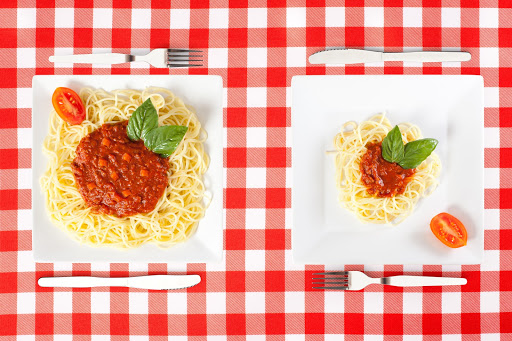Top Recommended Tips for Portion Control by Dietitians
- 2 Minutes Read
Portion control is the cornerstone of good nutrition. So how do you learn the right amount of food to eat at meals and snacks? Try these tips to help balance your meals and reduce portion size without feeling hungry.
Almost any food can fit into your diet, in moderation. Portion control is the secret to being able to eat all your favorites, while maintaining your weight or reaching your health goals. So, what is the best way to practice portion control?
Feeling hungry but it's not quite mealtime? It's quite common to confuse thirst for hunger. This is because the part of your brain responsible for interpreting hunger and thirst is essentially the same and sometimes signals get mixed.
Before that snack attack hits, try drinking a glass of water and then waiting 15 minutes. If that satisfies you, great news. You were thirsty! If your stomach is still rumbling, it's likely to be hunger.
Additionally, drinking a glass of water before your meal will fill your stomach with fluid and naturally make you less likely to overeat, which is a simple way to control your portions.
Vegetables are rich in fiber, water, vitamins, and minerals but happen to be very low in calories. Filling half your plate with vegetables is an easy way to reduce calories and control portions.
Fill half of your plate with low- or non-starchy vegetables (examples include broccoli, cauliflower, asparagus, spinach, kale, etc) then fill the other half with protein and whole grains. This "plate method" will ensure you eat a well-balanced meal while keeping your portions in check.
When organizing your meal, many of us use a large amount of starch as the base and then add protein and vegetables on top. Reconsider the placement of carbohydrates to help manage your portion sizes and ensure a well-balanced meal.
For example, when making a stir-fry, load your plate with veggies as the base, then add your protein, and then some rice as a topping. When having a pasta dish, consider using vegetables as your base, adding protein, and then adding some pasta to top it all off.
Protein packs a powerful punch against hunger as it increases feelings of fullness more than carbohydrates or fat. So it's no wonder that studies continually show that eating protein-rich meals and snacks helps people reduce their portion sizes while still feeling satisfied. Try to include lean protein sources at all of your meals and snacks. There are many sources of protein: lean meat, fish, poultry, eggs, dairy, beans, nuts, hummus, and nut butters.
We've all been there before - you sit down with a large bag of chips and before you know it, there are just crumbs left. Munching on snacks directly from a box or bag doesn't provide visual cues as to how large or small a portion should be. This makes it very difficult for you to know exactly how much you're eating and you are more likely to overeat.
Before reaching for your bag or box, take a look at the Nutrition Facts Label. The top of the food label will tell you exactly how many chips, crackers, etc. is considered one serving. Fill a small bowl with that amount and enjoy!
In a world consumed by multi-tasking, you may be tempted to watch television or scroll through social media while eating meals or snacks. Research has shown that people who watch television during meals tend to eat more than those who eat without any distractions.
Furthermore, this study showed that people who play computer games or scroll through social media during lunch, feel less satisfied at the end of that meal and go on to eat more food later in the day.
Practice eating mindfully instead. Mindful eating involves paying attention to what you're eating without any distractions. This allows you to notice your body's hunger and fullness cues, which can facilitate weight loss and help control portions.
Portion control takes a bit of discipline, mindfulness, and practice. Making a few simple shifts can help you learn how to portion control yet still feel full and satisfied after your meals. These tips can be using while dining out as well as at home.
Dining Out->Portion Size & Calories Weight Loss->Behavior
